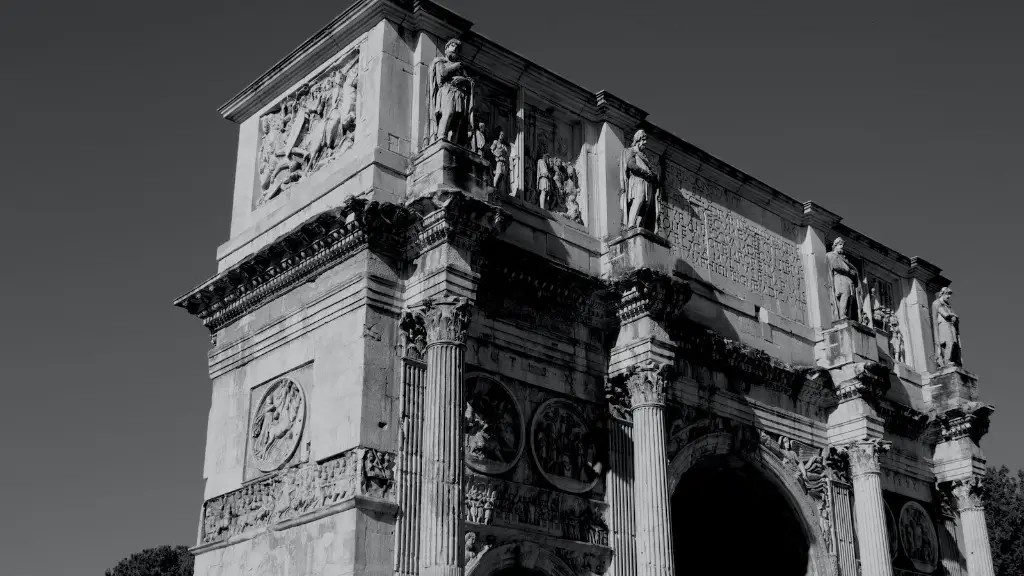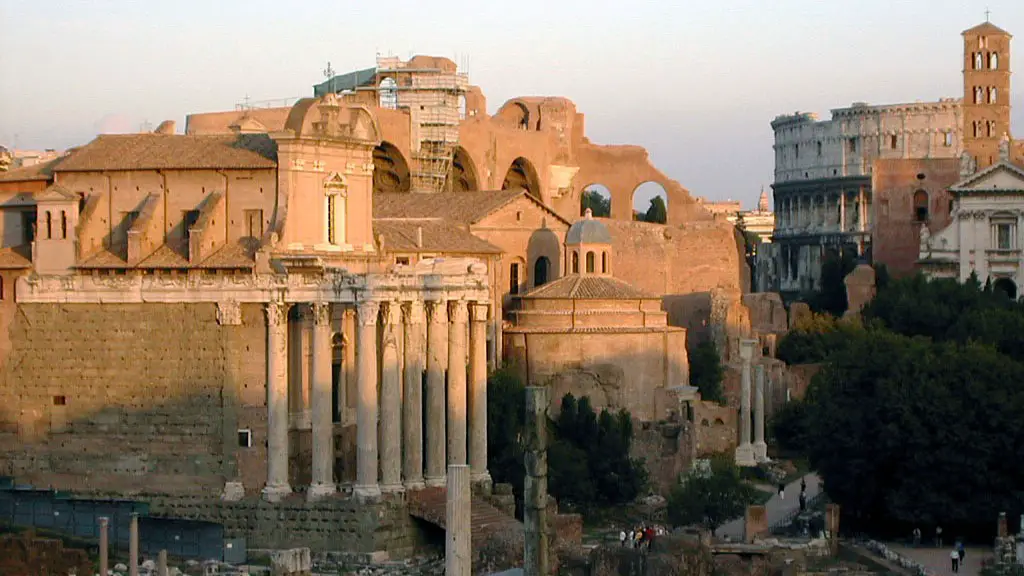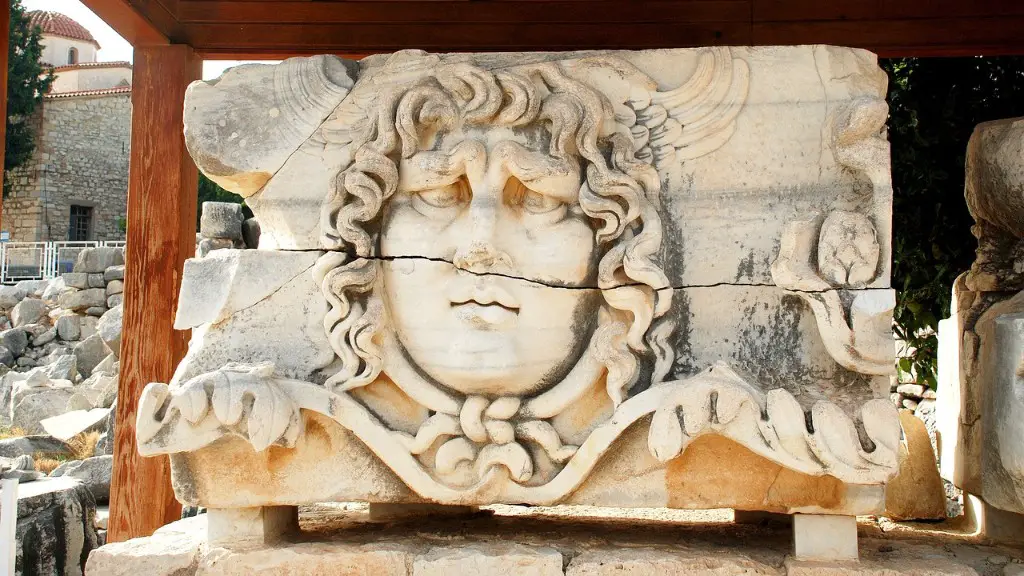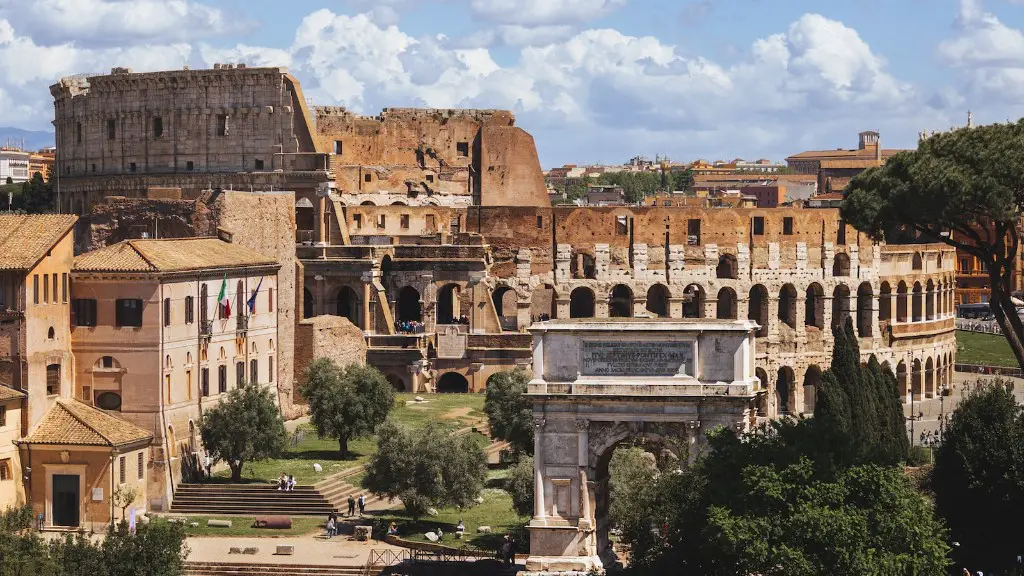1. What is a Mosaic?
A mosaic is an art style that involves arranging small pieces of material, such as stone, clay, glass, or even metal, into a unique pattern. The Romans were some of the most prolific users of mosaics in their civilization, often using them to decorate their walls, floors, or other objects in their houses. Despite its ancient origins, the mosaic still survives and is used today in all sorts of places.
2. Uses of Mosaic in Ancient Rome
The use of mosaics in Ancient Rome was common, from private households to public buildings. Inside homes, mosaics were used to adorn floors, walls, and even furniture. Mosaics were also popular for public buildings such as temples and even the Colosseum. They could be found in any form, from geometric patterns to realistic images of gods and goddesses, people and animals.
3. The Importance of Mosaics in Ancient Rome
Mosaics were important in Ancient Rome because they conveyed important messages. They were often used to depict stories from Roman mythology. Mosaics were also used to depict scenes of everyday life, such as farming, fishing and hunting scenes in larger, detailed panels. Mosaics were used to convey the cultural values of Ancient Rome. They were used to highlight important events or people, to glorify the Roman Empire, and to show pride in Roman achievements.
4. Materials Used in Ancient Roman Mosaics
Ancient Roman mosaics were made with a variety of materials. Common materials used were stones, such as marble or other colored stones with small pieces of glass or ceramic. They also used pieces of colorful sea shell or ivory for certain designs. The pieces were put together by a skilled artisan to create a unique and intricate pattern.
5. The Process of Making a Mosaic in Ancient Rome
The process of creating an Ancient Roman mosaic was one of patience, skill, and precision. The first step was to create a design, either from an existing template or from the customer’s own ideas. The next step was to cut the pieces of stone and other materials into the appropriate shapes for the design. This could be done with a hammer and chisel or a special tool called a tesserex. The pieces could then be put into place onto the surface to form the desired design. Finally, the pieces were held in place with either glue or cement.
6. Mosaic Techniques Developed by Ancient Romans
The Romans developed a variety of mosaic techniques that allowed them to create stunning, intricate designs. One technique was called opus tessellatum. This technique used stone, terra cotta and tile pieces to create geometric patterns with a translucent quality that allowed the light to flow through it. Another technique was called opus vermiculatum. This technique used tiny, curved tiles to form a three dimensional design, such as plants and animals. Finally, the astragalum technique was used to form intricate outlines of images in the mosaics.
7. Lasting Legacy of Ancient Roman Mosaics
The Ancient Romans are known as one of the most skilled civilizations in the history of mosaic art. Their innovative techniques, materials and designs continue to be used presently, adorning walls and floors all around the world. Mosaics represent an integral part of the legacy of the Roman Empire and are a reminder of the highly advanced craftsmanship achieved by the Ancient Romans.
8. Mosaics and Roman Architecture
Mosaic art complemented the architecture of Roman buildings. Mosaics were installed to adorn walls, floors and even ceilings in villas, temples and monuments. They were used to depict scenes such as battles, landscapes or mythological stories. The Romans believed that mosaic art enhanced the beauty and stature of a building.
9. Mosaics and Social Status
Mosaic art was a sign of wealth and power in Ancient Rome. Mosaics were typically only found in wealthy households and were used to demonstrate the owner’s high social status. The use of more intricate and detailed designs was a way for the elite to show off their wealth and influence.
10. The Decline of Mosaics in the Roman Empire
Mosaic art eventually declined in Ancient Rome due to the increasing cost of material, the rise of Christianity and the Edict of Milan which prohibited public displays of non-Christian artwork. This resulted in an overall decrease in the use of mosaics in the central and southern parts of the Roman Empire.
11. Mosaics and the Renaissance Movement
The Renaissance movement in the 15th century brought with it a renewed interest in the art of mosaics. The art had changed since the days of Ancient Rome and was now used to represent religious scenes, landscapes and everyday life scenes. This period of art inspired a revival of the art form, particularly in Italy and southern Europe, which is still influential today.
12. The Revival of Mosaics
Today, mosaics are used in a variety of places and purposes around the world. They are used to adorn public spaces and private homes, to decorate swimming pools, and even to create stunning backlit or illuminated displays. Mosaics also continue to be used in religious and spiritual settings, as well as in schools and universities to represent diverse backgrounds and cultures through artwork.
13. Modern Mosaics
Modern mosaics are made with everything from glass and stone to pebbles and even scraps of fabric. This type of art is becoming increasingly popular, with people using it to create beautiful pieces of art in their homes. Mosaics are becoming more informal, with non-traditional shapes and colors, and can incorporate anything from buttons and beads to recycled materials.
14. Why Mosaics Should be Embraced
Mosaics should be embraced as a representation of art, culture and history. They can bridge the gap between different cultures, religions and societies, and can be enjoyed in both modern and traditional contexts. The use of mosaics in contemporary times has a unique power to convey emotion and evoke nostalgia, making them timeless pieces of art.



